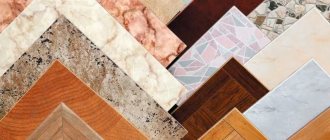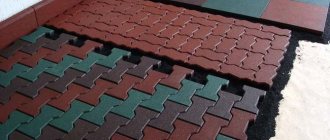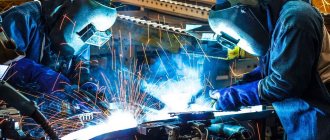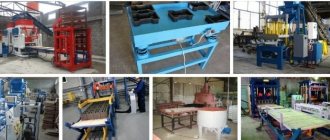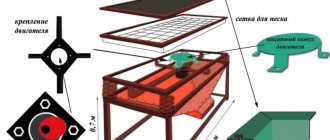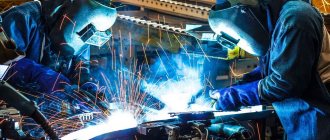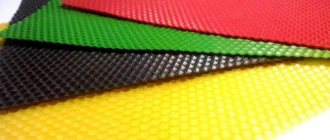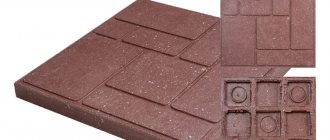Ceramic tiles are one of the types of building materials that are in consistently stable demand. People do not stop building and renovating apartments, even in times of crisis. Of course, large manufacturers specializing in the production of large and expensive collections may suffer significantly. But small entrepreneurs who work specifically “to order” always remain in the black.
That’s why today let’s talk about the production of ceramic tiles as an option for your own business. And in particular about what equipment you will need for the production of ceramic tiles.
Ceramic tile production technology
Depending on the type of product, the initial mixture is prepared. The composition varies and depends on the final purpose of the tile. It is at this stage that a concrete mixer will be required, since the process of manual mixing will take a lot of effort and time.
The next stage is the formation of the tiles. Here the vibrating table comes into play, which presses the clay mixture, laid out in special forms.
Next comes drying time. For this purpose, special ovens are used, where all excess liquid is removed from the tiles. Most often, drying chambers are used, where the entire process is carried out by supplying hot air.
And the final stage is firing. During this process, the tile acquires the required strength. After this, it can be packaged and sent to the customer.
Ceramic tile production scheme
Methods for producing ceramic tiles
The production of modern facing tiles is possible in several ways. Let's get to know each one:
- Casting
One of the oldest methods is when the finished clay mass is placed in ready-made molds and then fired. In this case, the finished products are not always the same and may not have very smooth edges. Such products can perform a purely decorative function when it is necessary to create a certain accent. Production of this type is very expensive, and therefore practically never occurs.
- Extrusion
In this case, the finished clay mass is drawn out using a special machine. Then the future facing tiles are cut in accordance with the specified dimensions.
- cutting
The most expensive method used in the manufacture of ceramic tiles. The material used is natural stone, which is cut into tiles. The yield of finished products is quite small, so cutting is used in the mosaic making process.
- Pressing
The main method of production of facing tiles. Here you get products that demonstrate high quality along with excellent appearance.
Technologies used
Production equipment - concrete mixer
Since pressing is the most popular type of production, we will consider it in more detail. Several manufacturing technologies can be used here:
- Monocottura
In this case, the product undergoes the firing process only once. The finished mixture first dries, then the surface is covered with glaze and only after this the products are sent to the kiln for firing. The resulting products are durable and practically do not absorb moisture. In addition, they have a matte surface and have increased wear resistance. Tiles produced in this way can be used for floors and walls. It can also be used to decorate building facades.
- Bicottura
Here the products undergo double firing. The first time - after pressing, the second - after the glaze was applied. The result is an enameled facing tile. Its surface can be either matte or glossy, depending on the enamel used.
But bicoturra tiles have high porosity, so they are used exclusively for interior decoration.
- Porcelain tiles
The third type of technology used, which allows us to obtain high-quality products. The production process is somewhat similar to monocottura, but there are some subtleties here. So, during the preparation of the clay mixture, quartz and feldspar are necessarily added. The color of the tiles is given by pigments of natural origin. The pressing process is carried out under high pressure, and the drying process takes place at temperatures significantly higher than standard.
A small ceramic tile business can indeed be a very profitable endeavor. And, above all, because you can offer several types of products at the same time. In addition, you will be able to offer really high-quality products at a lower price, which will certainly play into your hands, attracting numerous customers.
Historical introduction
The first examples of ceramic tiles began to be made in the distant past, and were found in the area between the Euphrates and Tigris rivers even BC. Finishing material is still one of the most popular in the construction market today.
Despite the centuries-old history of ceramic tiles, the manufacturing process of this material from different manufacturers is almost identical. Only the technologies, equipment, tools and equipment used differ.
How much money do you need to start a business?
Start-up capital for this production area will depend on the equipment. This is what requires major capital investments. To begin with, you can purchase used equipment from Soviet times. Over time, it can be replaced with a modern one. It's better to buy Chinese machines. Together with delivery, they will cost 22 million rubles. To this amount is added the purchase of raw materials, rent of premises, employee salaries, taxes, etc. Thus, the initial capital will be about 25 million rubles.
Recruitment and payroll
At the very least, you will be the director at first and you will be able to determine your salary yourself. For example, let’s take 40 thousand rubles; with good results, it can always be increased.
You will, of course, need an accountant, unless you decide to outsource this work to a specialist who simultaneously “runs” many small businesses.
To support production: mixing the mixture, pouring into molds, monitoring the operation of equipment, 3-4 people will be enough. 1-2 support workers and an office manager will also be needed.
The easiest way to find all the staff is through job sites like HeadHunter, Avito, Superjob and others; you can also use the site of a commercial newspaper like “My Advertising” or “From Hand to Hand”, if you have something similar in your region.
After selecting several resumes sent to you by email, you can conduct interviews yourself. An important point: call the telephone numbers left by applicants you like as contacts of their recommenders from previous places of work - such conversations may reveal new and very useful information about them.
Let's look at calculating employee salaries.
| Job title | Number, people | Rate, t.r. | Amount, t.r. |
| Director | 1 | 40 | 40 |
| Accountant | 1 | 20 | 20 |
| Office Manager | 1 | 25 | 25 |
| Workers | 3 | 35 | 75 |
| Helpers | 2 | 20 | 40 |
| Total | 200 |
Thus, 200 thousand rubles will be spent monthly on staff work. Taking into account possible bonuses, we will take the average amount of 230 thousand rubles as a guide.
Range
- tiles for bathrooms, kitchens, floors, fireplaces, pools, plinths, facades, sidewalks (as intended);
- stone, mosaic, antique, porous, glazed, etc. (according to texture);
- small decorative inserts, mosaics (planks and other elements);
- extrusion, pressing, casting, hand molding, etc. (according to molding method)
- unglazed, glazed with single and double firing (according to technology);
- metlakh tiles, terralya, clinker, ceramic granite, cotto (according to technology).
Sales market
- construction stores;
- construction markets;
- repair companies;
- individuals.
Marketing and sales channels
Potential clients should know about the high-quality and unique tiles produced at the newly opened enterprise. Retail sales will not be profitable; it is necessary to organize wholesale sales of products. To do this, contracts are concluded with points selling building materials.
Advertising:
- Creating your own website on the World Wide Web will allow potential customers to find information about the company, view the product range without leaving home and order the required quantity of tiles.
- Commercials on television will increase brand awareness and increase the opportunity for customers to contact this company.
- Agreement with points of sale of related materials. People coming to construction stores will be able to receive a business card with the phone number of the sales office and immediately order products.
- Word of mouth is a very effective way of advertising, but it will only work if the quality of the materials produced is constantly maintained.
Scale of production and size of investments
The production scale depends entirely on the size of the starting capital. To organize a plant of the scale that is provided by the leaders of the domestic market, such as Kerama Marazzi, Shakhtinsky Faience, JSC Nephrit-Ceramics, or Ceramics, tens, if not hundreds of millions of rubles will be required. Of course, not every entrepreneur is ready for such investments.
At the same time, you can open a workshop focused on the production of small batches of goods in individual designs with about 1 million rubles. The main expense in this case will be the purchase of equipment.
It is important to understand that the plant will not become profitable immediately. It will take at least six months to develop optimal recipes and designs, search for clients, promote the brand on the market and other issues. Accordingly, in order not to give up and refuse to implement an idea, an entrepreneur must have a financial safety net.
Another feature of the ceramic tile market is the seasonality of demand, the peak of which occurs in the warm season. Moreover, it makes no sense to produce “reserves” in the hope of selling the accumulated volume of production in the future. Trends are constantly changing, and a particular design may become outdated at any time.
results
The company's turnover is inconsistent. In one month, girls can receive orders worth 20,000 rubles, and in the next - for 500,000 rubles. This is due to poorly forecasted demand for tiles.
Profit averages 156,000 rubles per month. The girls divide the money among themselves and leave part of the funds in the account to pay rent and utilities (27,000 rubles) in less profitable months.
In 2022, friends sold 23 m² of tiles per month. By the end of 2018, they want to sell 70 m² monthly and increase turnover to 900,000 rubles.
One of the unusual orders is a decorative panel to decorate the fireplace
Business registration
At the initial stage, many small businesses choose the form of individual entrepreneur - individual entrepreneur. Registration, taxation, and possible fines with this approach are reduced to minimal amounts, which will only be beneficial for an inexperienced production worker.
In the future, you can always re-register the enterprise as an LLC or JSC when, due to investments attracted from partners, its size increases, and at the same time it becomes possible to represent it to counterparties with more status.
In the meantime, the taxation system can choose “imputation” (UTII) based on the number of employees or “simplified taxation” (USN) - 15% of gross income or 6% of profit (income minus expenses).
OKVED for this area 23.31 – “production of non-fireproof ceramic tiles for internal and external cladding of walls and facades of buildings, mosaic tiles, etc.; production of non-refractory ceramic slabs and paving blocks.”
The direction is promising, all that remains is to think about where to get the money for the organization. And here, in addition to loans, leasing and attracting investors, there is one more point that can become your personal “manna from heaven” from the government of the country.
Financial calculations
Let's start with the basic investment:
- equipment – 530 tr.;
- permits - 25 thousand rubles, total 555 thousand rubles.
And let's add everything else:
- rental of premises - 30 thousand rubles;
- employee salary – 230 thousand rubles;
- raw materials and materials - 360 thousand rubles;
- taxes - 10 thousand rubles;
- marketing – 20 tr.;
- minor expenses - 15 tr.
Total – 665 tr.
Let's add the basic investment for equipment and get the required amount to start operations - 1,220 tr.
Considering that every month a small workshop will be able to produce tiles worth 950 thousand rubles, which, if fully sold minus monthly expenses, will give an income of 285 thousand rubles. Let's subtract another 5% of equipment depreciation and get 285 - 14.25 = 270.75 tr.
It would seem that this is a wonderful result for a small business, but such an instant sale of all products does not happen so often in practice, and in addition, such a “harmful” expense item may appear as unforeseen ones: equipment repairs, problems with transport, professionalism of employees - all kinds of force. major
Nevertheless, on average, the basic investment pays off within a year or, adjusted for seasonality, one and a half to two years.
Room
The search for premises took 2 months.
Since production is not automated, the master does most of the work himself. Therefore, we were looking for a room with enough daylight and running water. Another requirement is a voltage of at least 380 volts, this is what the kiln requires. The ideal area of the premises is from 70 to 100 square meters, in order to divide it into office, warehouse and production parts, but without paying large utility bills.
On the city portal, the girls found an 80-meter room in the building of the Yekaterinburg Art Foundation. The rent cost 20,000 rubles per month, utilities were paid separately.
The room turned out to have large windows, running water and 380 volt outlets. The girls planned to install a stove in the center and use the rest of the space to work at the computer, mix materials, and store tiles and samples.
There was no need to renovate the premises - they just did some general cleaning. Then the friends bought shelves for products in Ikea, 3 work tables and 4 chairs, a chalkboard for notes and a kettle. The girls spent 27,000 rubles on furniture.
A kiln was installed in the center of the room
A chance to add funds for your development
There is a small business support program in Russia. That is, if you are planning to expand production no later than two years after registration, you can formulate a reasonable and, most importantly, original business plan - for example, for the production of custom tiles according to the catalog of designs you provide, which returns to the topic of stencils and modernized spray chamber and the missing 350 tr. In this case, you can count on the “Commercialization” program to help organize additional production facilities.
For the industry we are considering, you can also pay attention to the “Development” programs, if you decide to modernize equipment or open a new workshop, and “Internationalization” - if you want to export products.
It is only important to understand in advance that if the decision is positive, you will need to account for the money given to you. However, it's worth it.
State aid
Do not forget that in many countries there are various assistance programs for businesses. For example, in the Russian Federation there are many programs designed to help beginning entrepreneurs (the period for registering a business is up to 2 years). Support is provided in several areas:
- subsidies;
- lending;
- provision of property (premises, equipment) on preferential terms;
- education;
- providing grants;
- export support.
You should contact your local municipality to find out what options are available. Thus, it is possible, albeit in some cases slightly, to reduce the financial burden, making it easier for yourself to enter the world of business.
